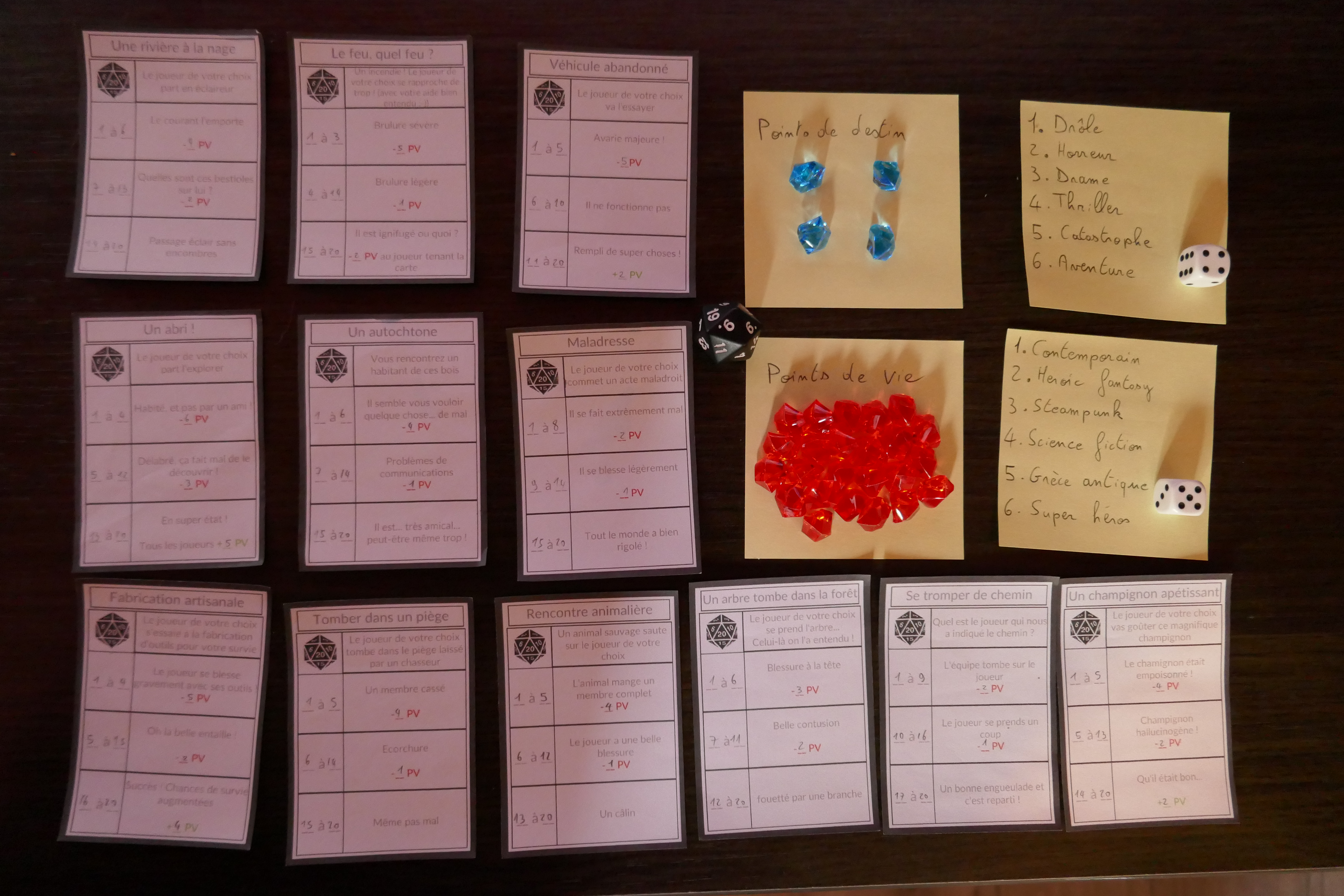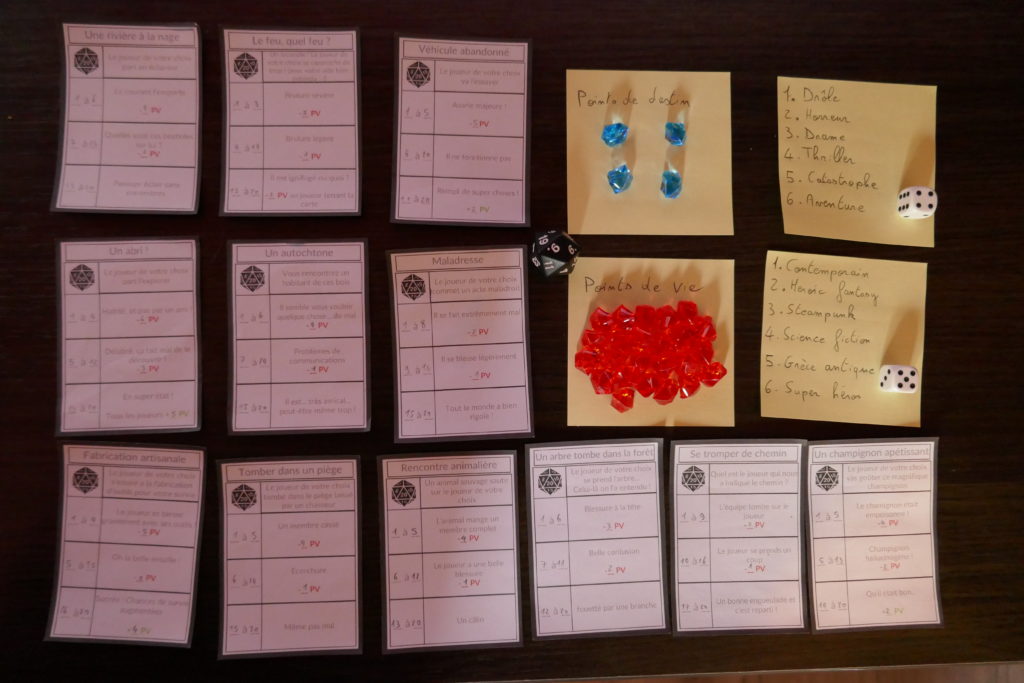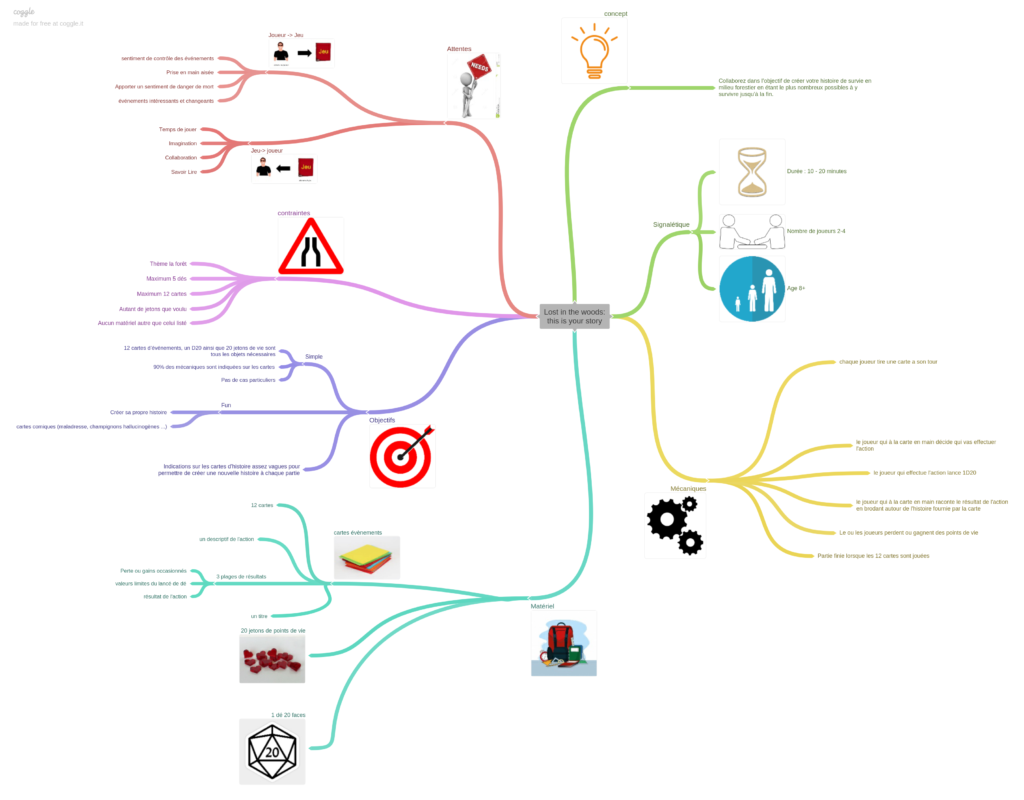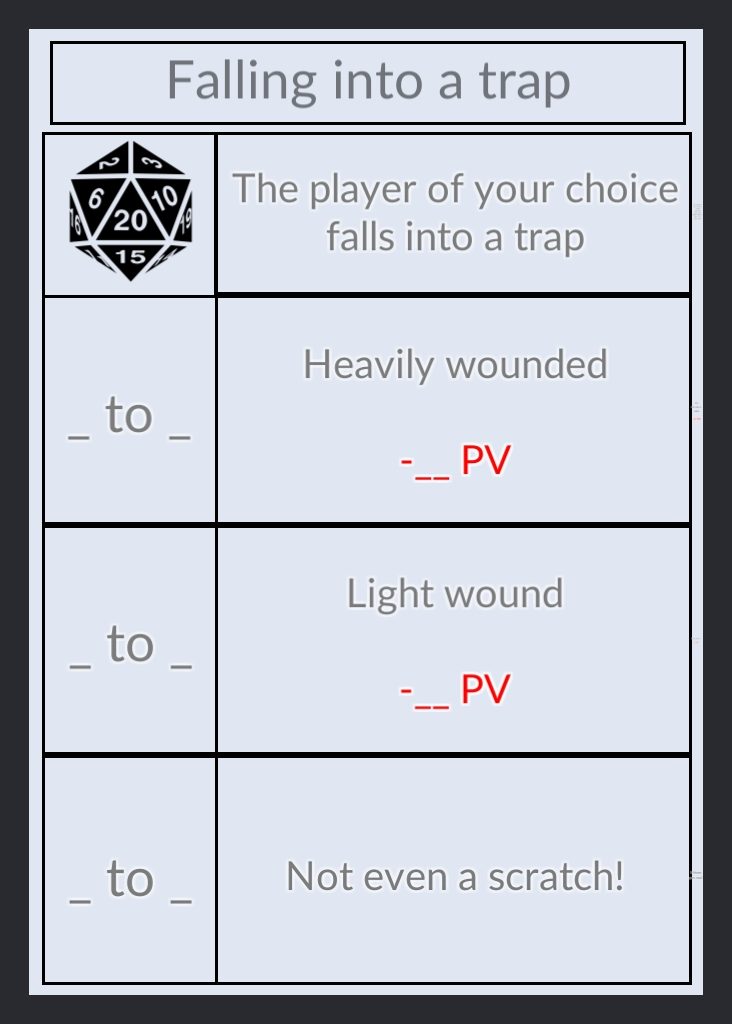
Board Game – Lost in the woods : this is your story – Creation process
Lost in the woods: this is your story is a story telling game.
Players participate to the story by weaving a story based on the card they drawn. the results of the actions of the players is based on the dice roll.

Context
This was my first assignment as a game designer at Artline Institute.
I started with the constrains stated below :
. Create a little game
. Theme: Forest
. Use no more than:
– 5 dices
– 12 cards
– As many tokens as you want
Step 1: Brainstorming
I started by doing a solo brainstorming around the theme and the constrains. Acter 1 hour of thinking, I got a hundred proposal to target a first game idea.
The brainstorming was oriented around 3 axes:
- The theme: Forest
What does a forest evokes to me ?
What is in a forest ?
What can we do in a forest ?
What is the pop culture representation of a forest ?
What ideal use of a forest ? - The Hardware
What can we do with dices ?
What can we do with cards ?
What can we do with Tokens ? - The games
What type of board games do I know ?
Step 2: Extract game ideas
A total of 5 game ideas came from this brainstorming.
- A reflex based assembly game for children where each player has a different hut to build with materials that are disposed at the center of the table in a manner that everyone can’t have enough at the same time.
- A little challenge game with actions to perform to win nuts. Each player gives a challenge to another one and takes the nut from the player if he wins.
- A growing forest strategy game where each player has to make his tree bigger than the other.
- A conquest game based on dexterity where each player will try to win cards placed on the table by launching tokens that have to stay on those cards
- A storytelling game where each player contributes to the story by weaving a part of it based on a card indication and a dice throw result.
I decided to keep the storytelling game because it was the game that i knew i’ll be able to achieve in the small amount of time I had (2 weeks).
Furthermore, I had to find play testers and I knew that this game will resonate with my friends tastes.
Step 3: Make a mind map

Step 4: Make a prototype and rules – corrective loop
A game has to be played, and to play a game, we need a prototype. I started directly with a little tool called Card Creator available here.
The cards have a simple layout and no fancy graphics but are clean enough to let players play with it without questions asked. I kept numerical values blank to be able to balance the game later and to adjust it after each playtest.

Those values where fixed after a dozen of playtests to fit in the two weeks schedule.
Step 5: Finalize
After fixing the values and reorganizing the rule book, the game was ready to be finalized.
Here is the full rulebook (in french) for you to see.
Check Rainbow Six Siege: On board presentation !